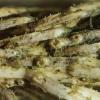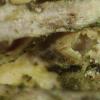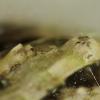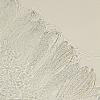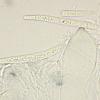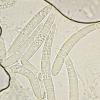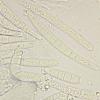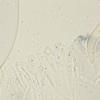
31-10-2025 09:19
 Lothar Krieglsteiner
Lothar Krieglsteiner
Can somebody provide me with a file of:Rogerson CT

09-08-2025 13:13
 Maria Plekkenpol
Maria Plekkenpol
Hello,Yesterday I found these on burnt soil. Apoth

28-10-2025 19:33
 Nicolas Suberbielle
Nicolas Suberbielle
Bonjour à tous,Je voudrais votre avis sur cette r

25-11-2016 13:54
 Stephen Martin Mifsud
Stephen Martin Mifsud
Hi, I found numerous seeds of Washingtonia robusta

28-10-2025 22:22
 Bernard Declercq
Bernard Declercq
Hello.I'm searching for the following paper:Punith

28-10-2025 15:37
Carl FarmerI'd be grateful for any suggestions for this strik

28-10-2025 11:29
 Tanja Böhning
Tanja Böhning
Hello, I found this very small (ca 0,5mm) yellow
Cryptodiscus spec. ?
Peter Püwert,
12-11-2015 23:55
some days ago I thought on died sproutes of Lycopodium clavatum these mushrooms which I regard as Cryptodiscus spec. Can somebody help, also with literature?
Thanks in advance.
Regards Peter
Gernot Friebes,
13-11-2015 00:06
Re : Cryptodiscus spec. ?
Hi Peter,
did you compare with Karstenia rhopaloides?
EDIT: I overlooked the measurements on your photo. The spores should be a bit wider for K. rhopaloides so your find seems to have some similarities with K. ideaei.
Best wishes,
Gernot
did you compare with Karstenia rhopaloides?
EDIT: I overlooked the measurements on your photo. The spores should be a bit wider for K. rhopaloides so your find seems to have some similarities with K. ideaei.
Best wishes,
Gernot
Peter Püwert,
13-11-2015 00:26
Re : Cryptodiscus spec. ?
Hi Gernot,
I had also already thought of it. I know Karstenia/Cryptodiscus rhop. surely well, the spores are too long and too slim, there is also no pouting border.
Greetings Peter.
I had also already thought of it. I know Karstenia/Cryptodiscus rhop. surely well, the spores are too long and too slim, there is also no pouting border.
Greetings Peter.
Gernot Friebes,
13-11-2015 00:30
Re : Cryptodiscus spec. ?
Hi Peter,
you are right, I overlooked the measurements and just edited my post before you answered. It could be K. idaei with longer and narrower spores.
Best wishes,
Gernot
you are right, I overlooked the measurements and just edited my post before you answered. It could be K. idaei with longer and narrower spores.
Best wishes,
Gernot
Peter Püwert,
13-11-2015 00:41
Re : Cryptodiscus spec. ?
Hi Gernot,
just with "Zotto" discovers: Ramonia chrysophaea (Pers). Vezda
Sp. 40-66/3-5, 1.5 µ m of thick mucus cover, 10-11 splits.
Regards Peter.
just with "Zotto" discovers: Ramonia chrysophaea (Pers). Vezda
Sp. 40-66/3-5, 1.5 µ m of thick mucus cover, 10-11 splits.
Regards Peter.
Hans-Otto Baral,
13-11-2015 09:08

Re : Cryptodiscus spec. ?
Hi Peter & Gernot
I also think it is K. idaei. What you could do is to check Lugol, the entire hymenium should react hemiamyloid (i.e. the entire ascus wall), but no apical ring sould be visible.
The species is rather variable both by macro and micro, maybe it is heterogeneous, but even then it would be difficult to find clear differences. Also the limits to K. lonicerae are apparently not sharp.
The lichen genus Ramonia is indeed a problem because it contains apparently non-lichenised species that belong in Karstenia, though the question whether a lichenisation is present or absent is not easy to settle.
Zotto
I also think it is K. idaei. What you could do is to check Lugol, the entire hymenium should react hemiamyloid (i.e. the entire ascus wall), but no apical ring sould be visible.
The species is rather variable both by macro and micro, maybe it is heterogeneous, but even then it would be difficult to find clear differences. Also the limits to K. lonicerae are apparently not sharp.
The lichen genus Ramonia is indeed a problem because it contains apparently non-lichenised species that belong in Karstenia, though the question whether a lichenisation is present or absent is not easy to settle.
Zotto
Peter Püwert,
13-11-2015 18:59
Re : Cryptodiscus spec. ?
Hallo Gernot und "Zotto",
danke für die Hinweise.
Die Präparate wurden schon mit Lugol behandelt, man sieht es doch an den Ascus- Spitzen.
Mir fällt es immer recht schwer, manchen Pilzlein eine solche Bandbreite vor allem in mikroskopischer Hinsicht zuzugestehen, wo doch bei anderen Arten 1 Septe und 0,5 µm ausreichen, sie selbstständig werden zu lassen. Letztendlich feixen aber die Sequenzierer, aber das sind sicherlich auch nicht die letzten Lacher !
Ich hatte da Ramonia ins Spiel gebracht, reagiert nicht bei lichenisierten Pilzen das gesamte Hymenium stark amyloid ?
Kann ich den von mir vorgestellten Pilz als Karstenia cf. idaei ablegen ?
Herzliche Grüße
Peter.
danke für die Hinweise.
Die Präparate wurden schon mit Lugol behandelt, man sieht es doch an den Ascus- Spitzen.
Mir fällt es immer recht schwer, manchen Pilzlein eine solche Bandbreite vor allem in mikroskopischer Hinsicht zuzugestehen, wo doch bei anderen Arten 1 Septe und 0,5 µm ausreichen, sie selbstständig werden zu lassen. Letztendlich feixen aber die Sequenzierer, aber das sind sicherlich auch nicht die letzten Lacher !
Ich hatte da Ramonia ins Spiel gebracht, reagiert nicht bei lichenisierten Pilzen das gesamte Hymenium stark amyloid ?
Kann ich den von mir vorgestellten Pilz als Karstenia cf. idaei ablegen ?
Herzliche Grüße
Peter.
Hans-Otto Baral,
13-11-2015 20:49

Re : Cryptodiscus spec. ?
Ja stimmt, die Konzentration ist aber nur sehr gering, weshalb die Rotreaktion der Lateralwand noch nicht durchschlägt. ich meine dass K. rhopaloides apikal mehr verdickt ist und ringartig blau reagiert. Beide Arten reagieren intensiv hemiamyloid im gesamten hymenium, nach KOH dann tief blau in Jod.
Nur zu also mit mehr Jod, deine Lösung sollte braun ausschauen wie auf meiner Homepage, letztes Bild. http://www.invivoveritas.de/iodine-reaction/
Ja, die Variation bei den Pilzen ist ein großes Problenm. Selbst wenn man auf die Methodik achtet gibt es große Streuungen in den Sporenmaßen. Diejenigen die minimale Differenzen hochhalten, haben entweder lange und sorgfältig beobachtet oder vorschnellen Mist gebaut. K. cf. idaei ist sicher eine gute Wahl.
Übrigens: Ramonia interjecta = K. rhopaloides!
Gruß
Zotto
Nur zu also mit mehr Jod, deine Lösung sollte braun ausschauen wie auf meiner Homepage, letztes Bild. http://www.invivoveritas.de/iodine-reaction/
Ja, die Variation bei den Pilzen ist ein großes Problenm. Selbst wenn man auf die Methodik achtet gibt es große Streuungen in den Sporenmaßen. Diejenigen die minimale Differenzen hochhalten, haben entweder lange und sorgfältig beobachtet oder vorschnellen Mist gebaut. K. cf. idaei ist sicher eine gute Wahl.
Übrigens: Ramonia interjecta = K. rhopaloides!
Gruß
Zotto

